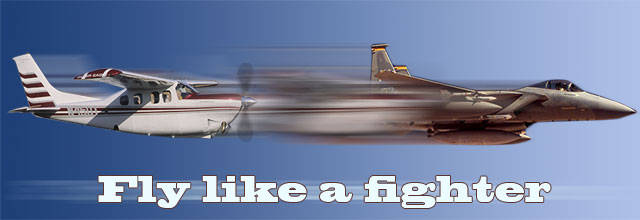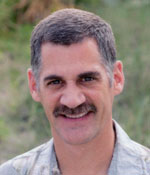
U.S. Air Force T-38 pilot training students spend a lot of time practicing formation maneuvers, including rejoins. During tactical maneuvering our rejoin airspeed is 350 knots, and the flight lead will use 45 degrees of bank in level flight if a turning rejoin is desired. The wingman normally rejoins to the low wing on the inside of the turn, but the student also needs to practice rejoining to the high wing on the outside of the turn. To accomplish this correctly, the wingman needs to accelerate to about 380 knots on the inside of lead’s turn, about 30 to 45 degrees off the lead’s tail, and slightly below the lead’s altitude. Within a few hundred feet of the lead, the wingman should pass behind and then stabilize next to the lead, co-altitude, co-speed, on the outside of the turn, before he then climbs the few feet to the fingertip position with three feet of spacing between wingtips.
On one mission I was flying solo as lead and my wingman was a student with an instructor in the back seat. Toward the end of the sortie the student needed to practice a rejoin to the high wing, so I set up a right turn, and he flew the rejoin as described—until he crossed behind me and flew to a position abeam me.

He had a little too much airspeed and didn’t pause at the co-altitude position to settle in place before climbing slightly to my wing. When I looked left and saw him outside my turn but pulling back into me, I knew I needed to get out of the way in a hurry. This was one of those moments when you have to make a panic move: left hand full forward (to light the afterburners) and right hand full back (to pull back on the stick and climb). I climbed until the wings started buffeting as I slowed to below 200 knots. By then my panic had subsided enough for me to realize we didn’t collide, so I stopped pulling up and rolled left to take a peek and find my wingman. Fortunately, his instructor had also gone into panic mode and was in a hard left turn away from me, now also stopping his turn to take a peek to find me.
Everyone is familiar with the panic stop in a car—right foot off the gas and stomp on the brake pedal. There are a few “instant” moves for an airplane that all of us should have in our memory for quick recall. One is stall recovery. In the Air Force we use “max—relax—roll.” From the left seat in a general aviation airplane, this means right hand full forward (full power), left hand slightly forward (unload the yoke), and left hand up or down along with rudder to level the wings.
A second is the go-around, which is typically full power, carburetor heat off, pitch to slow or stop the descent without slowing to a stall, then possibly partially retracting the flaps. In a high-performance turbocharged airplane, the sequence might be pushing forward in sequence the mixture (red), prop (blue), and throttle (black) controls.
For a touch-and-go, I generally teach “feet—flaps—throttle.” There is no point in adding power if you aren’t aligned properly with the runway, hence the feet, or rudders, first.
What should your muscle memory be for instant recall in the airplane(s) you fly? Share your ideas on the AOPA Facebook page.



